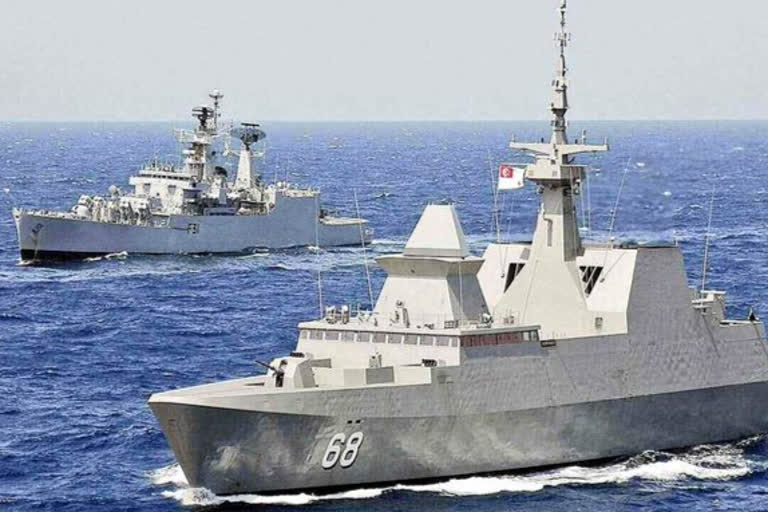New Delhi: Very soon in the near future, aided by the Indian Navy, three Indians in a deep submersible craft will travel to the dark watery depths of the central Indian Ocean, marking the deepest ever Indian descent to about 6,000 metres or 6 km.
Indian Navy chief Admiral Karambir Singh had earlier said that the Navy’s experience in operating manned and unmanned submersibles, and its understanding of the underwater domain would pool into the national effort which is a key component of the aptly named ‘Deep Ocean Mission’.
The Ministry of Earth Sciences (MoES) will be the nodal ministry in the multi-institutional ambitious mission.
Cleared by the Union Cabinet chaired by Prime Minister Narendra Modi on Wednesday, the mission will aim at a survey of poly-metallic nodules, hydrothermal deposits, as also research on deep-sea bio-diversity.
Read: Navy chief performs push-ups with NDA cadets
Largely porous, polymetallic nodules are small roundish lumps that are found on the sea bed at depths from 4,000-6,000 metres. These nodules contain manganese, iron, nickel, copper, cobalt, lead and rare earth elements and metals which are very vital for high technology industries that make a range of products from computers and mobile phones to fighter jets.
A government release said: “The estimated cost of the Mission will be Rs 4,077 crore for a period of 5 years to be implemented in a phase-wise manner. The estimated cost for the first phase for the 3 years (2021-2024) would be Rs 2,823.4 crore.”
Read: In a first, US Navy refuels aircraft using unmanned drone
The manner submersible will carry a suite of scientific sensors and tools while an Integrated Mining System will be developed for mining polymetallic nodules with the broad aim of exploration and harnessing of deep-sea minerals and energy.
After the exploration effort, the commercial exploitation will begin as and when commercial exploitation code is evolved by the UN’s International Seabed Authority.
Very few countries possess the technology to undertake such deep-sea ventures.
The record for the deepest manned sea dive is held by Victor Vescovo, an explorer who touched the Mariana Trench sea floor at 10,928 meters in May, 2019.
A Chinese submersible craft ‘Fendouzhe’ took three researchers to the plumbing depths of about 10,909 meters on one of the earth’s deepest points on the Mariana Trench on November 10, 2020. ‘Fendouzhe’ was operated by the Institute of Acoustics, Chinese Academy of Sciences (IACAS).
Oceans occupy 70 per cent of the earth’s surface area, of which about 95 per cent of the deep ocean is unexplored. India has a unique maritime position with a 7,517 km long coastline and 1,382 islands.
Also Read: Navy inducts 3 indigenously-built advanced light helicopters ALH MK III



